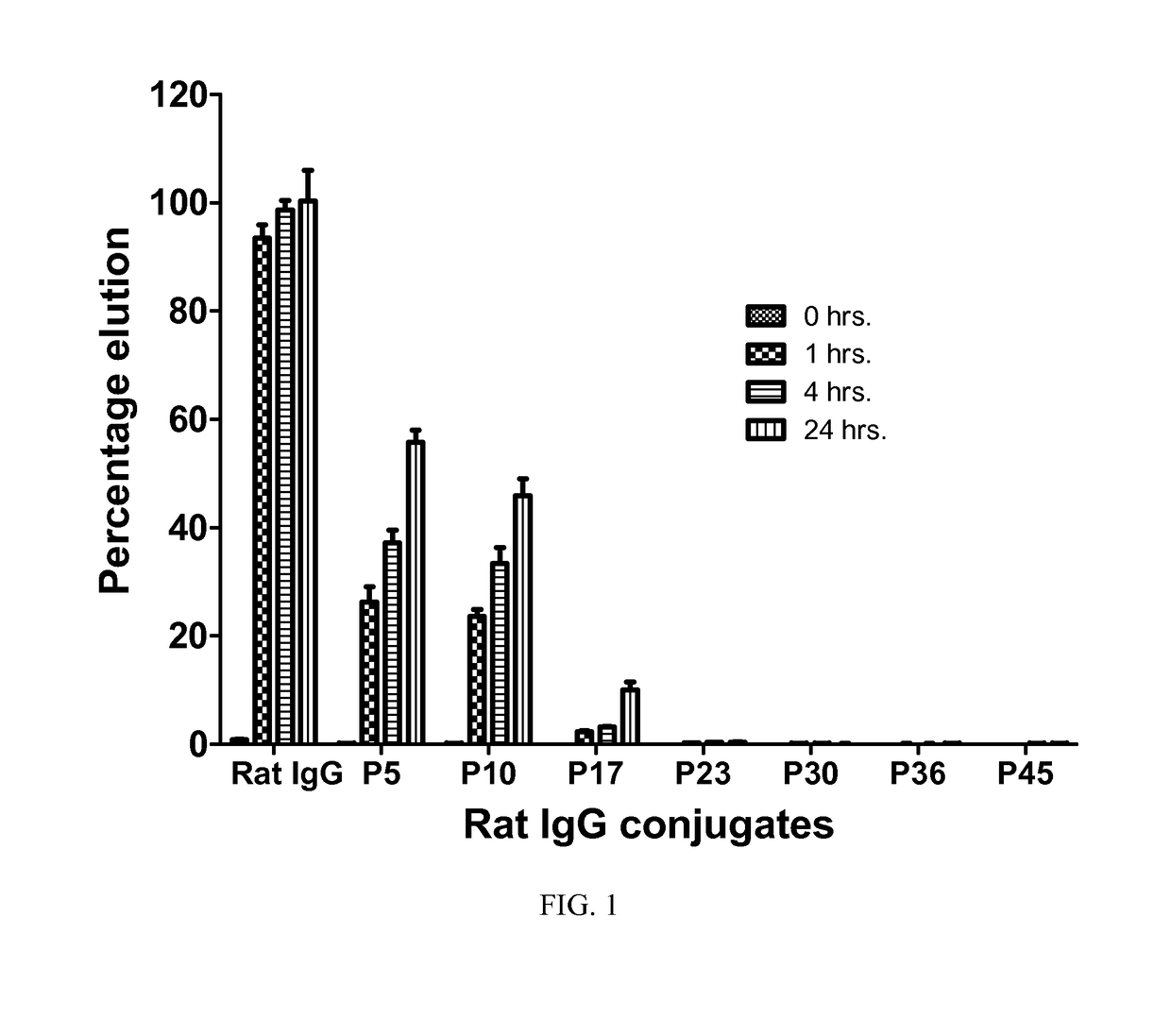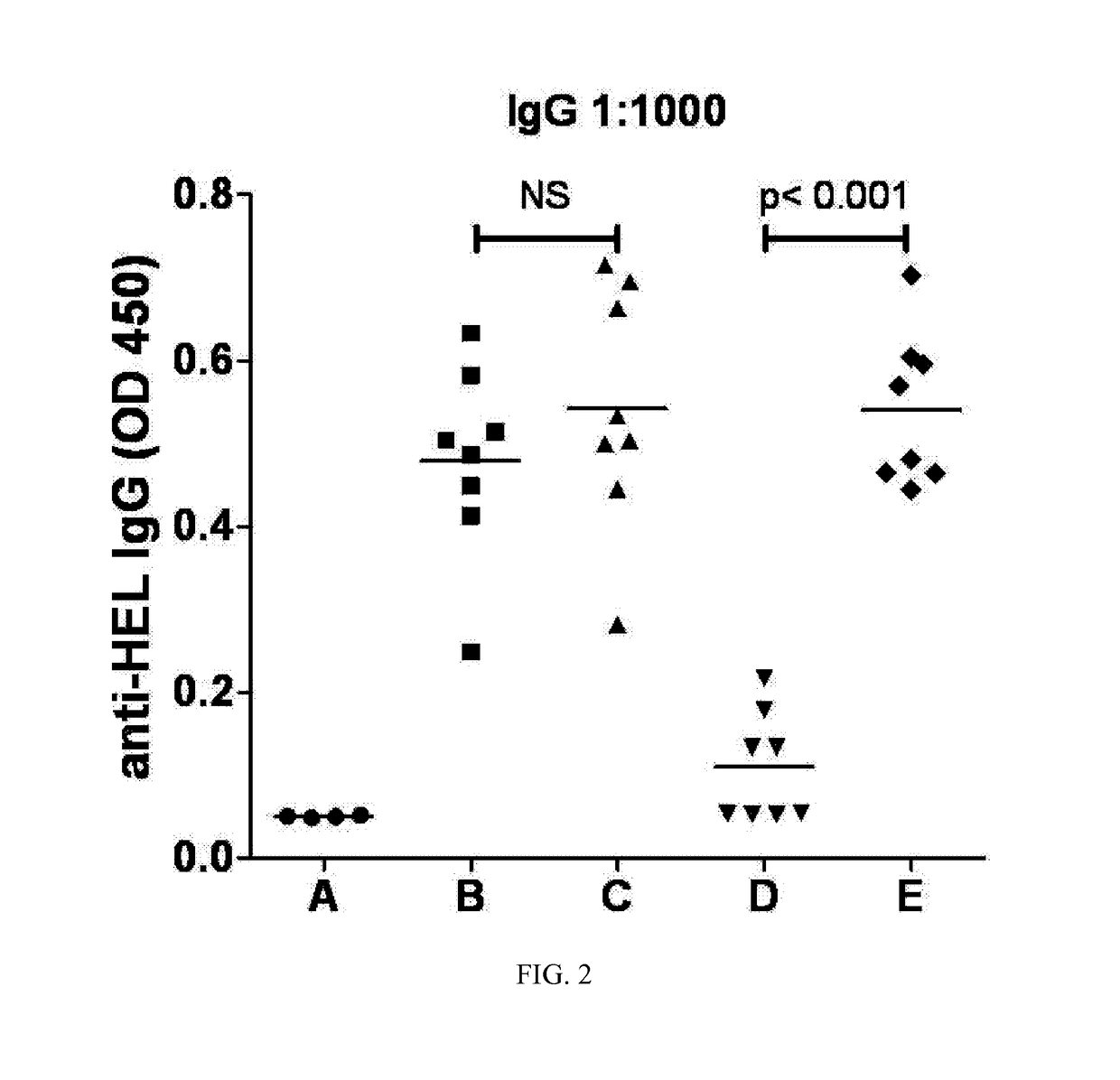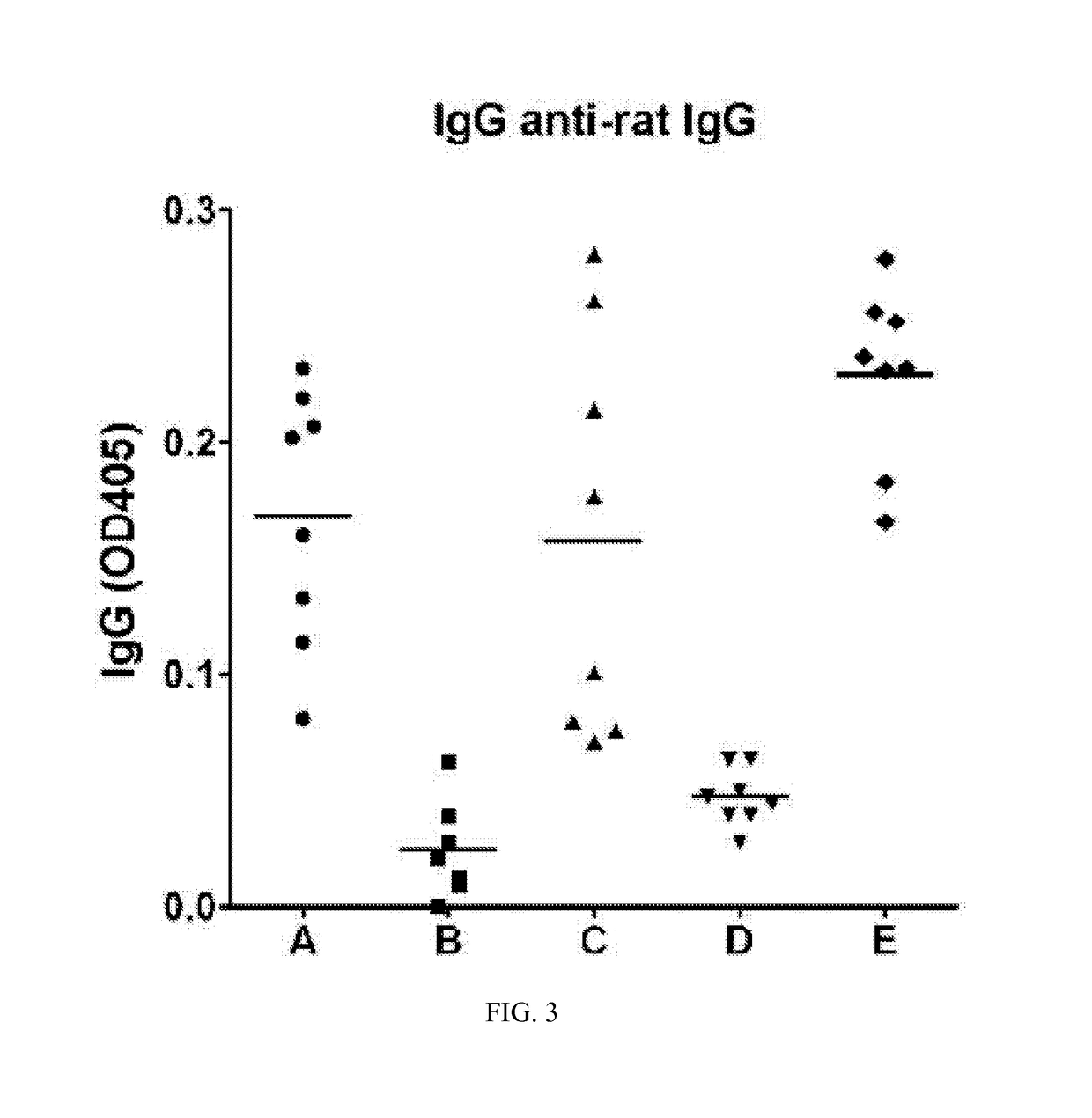Immunogenic compositions and reagents for preparing
a technology of immunogenic compositions and reagents, applied in the field of conjugates, can solve the problems of complex mixture of components in the prepared formulation, undesired protein modification, etc., and achieve the effects of enhancing the immunogenicity of the antigen, reducing morbidity and mortality, and high-effect medical intervention
- Summary
- Abstract
- Description
- Claims
- Application Information
AI Technical Summary
Benefits of technology
Problems solved by technology
Method used
Image
Examples
example.compound 7a
Example. Compound 7a
[0218]Compound 2 (0.13 g, 0.41 mmol) in dry THF (4 mL) was treated with N-hydroxysuccinimide (0.05 g, 0.41 mmol, 1 equiv) and cooled in an ice bath. DICD (0.08 mL, 0.49 mmol, 1.2 equiv) was added. After 1.5 h, amine 9 (0.13 g, 0.49 mmol, 1.2 equiv) was added followed by NEt3 (0.07 mL, 0.49 mmol, 1.2 equiv). The reaction came gradually to rt while stirring under argon. THF was removed by rotary evaporation and the residue was taken up in DCM (10 mL), washed with 1N HCl, dried over Na2SO4 and concentrated. Purification by column chromatography (10% Et2O / DCM to remove urea byproducts, 50% Et2O / DCM / 1% formic acid) provided the desired amide as an oil (0.15 g, 64%). 1H NMR (CDCl3): δ 7.53 (d, 2H); 7.36 (d, 2H); 6.31 (s, 1H); 4.15 (m. 4H); 3.97 (s, 2H); 3.73 (m, 10H); 3.55 (s, 2H); 3.44 (m, 2H); 1.43 (s, 9H); 1.28 (t, 6H). 31P NMR (CDCl3): δ−19.20 (t). HRMS (C25H40F2NO9P) calcd 568.2487 (M+H)+, found 568.2492.
Example. Compound 7b
[0219]Ester 7a (0.86 g, 1.51 mmol) was t...
PUM
| Property | Measurement | Unit |
|---|---|---|
| diameter | aaaaa | aaaaa |
| size | aaaaa | aaaaa |
| concentrations | aaaaa | aaaaa |
Abstract
Description
Claims
Application Information
 Login to View More
Login to View More - R&D
- Intellectual Property
- Life Sciences
- Materials
- Tech Scout
- Unparalleled Data Quality
- Higher Quality Content
- 60% Fewer Hallucinations
Browse by: Latest US Patents, China's latest patents, Technical Efficacy Thesaurus, Application Domain, Technology Topic, Popular Technical Reports.
© 2025 PatSnap. All rights reserved.Legal|Privacy policy|Modern Slavery Act Transparency Statement|Sitemap|About US| Contact US: help@patsnap.com



